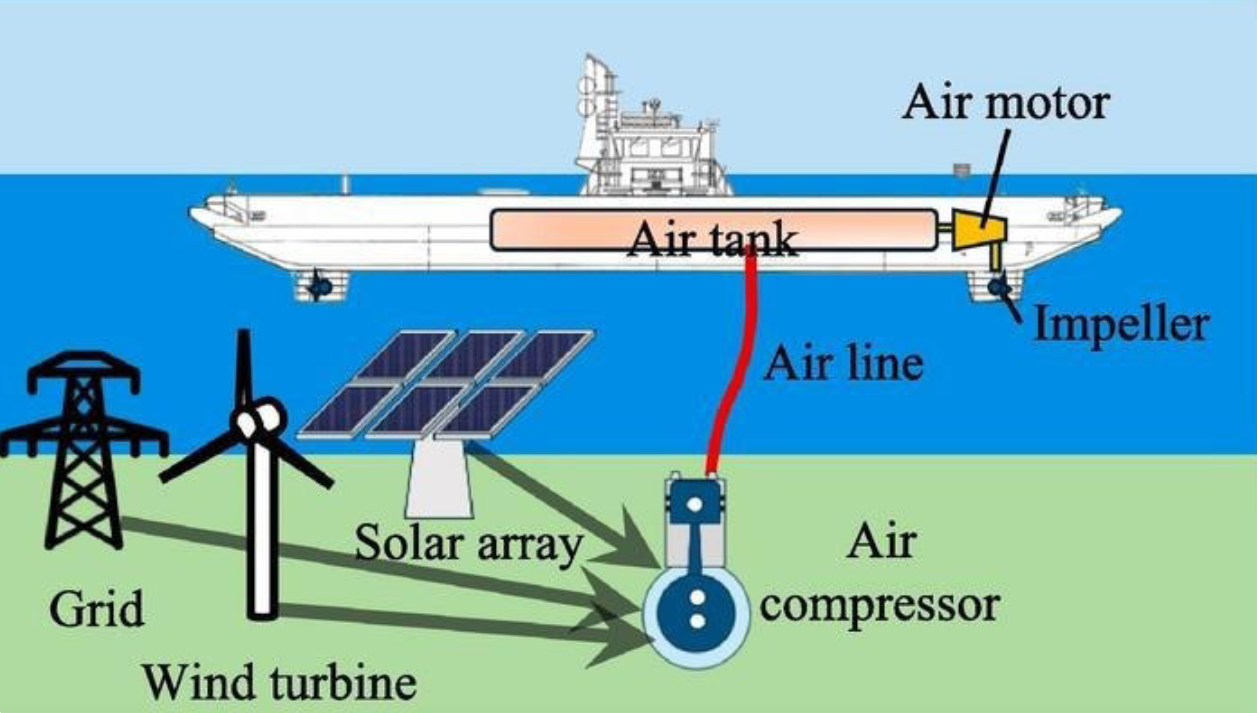🕒 Article read time: 3 minutes
Pneumatic ferry boats!

Scientists propose pneumatic propulsion as a cleaner alternative to diesel.
Researchers say they've developed a method that could replace the two diesel engines currently powering a ferry boat with pneumatic propellers—offering a potentially cleaner, quieter, and more efficient alternative for short-distance maritime travel.
Schematic of the proposed pneumatic propulsion with multi-option for connectivity, be it grid and/or renewable energy connectivity.

According to the team, the two air motors used in place of the diesel engines each generated 250 kW of power, enough to keep the ferry operating reliably on a set route within Finland’s maritime transport system.
Published in the journal Energy Conversion and Management, the study aimed to assess both the technical and economic feasibility of replacing conventional diesel engines with pneumatic propulsion on an existing vessel.
The research was, “conducted to evaluate the technical and economic feasibility of replacing the conventional diesel engine with a pneumatically propelled one on an existing ferry boat within the context of Finland's maritime transport needs.
It is demonstrated that pneumatic propulsion, while unconventional, holds a promise as a sustainable and energy-efficient alternative to conventional marine engines, particularly for short-distance ferry operations,” the scientists noted.
Logistics UK's Head of Decarbonisation Policy Lamech Solomon said: "Pneumatic propulsion is a promising example of clean maritime innovation. For short-distance routes like ferries, alternatives to diesel that cut emissions are fundamental.
"Whilst this technology is early-stage, Logistics UK support collaboration and further trials to assess its real-world feasibility. Logistics UK continues to champion scalable and practical solutions that help decarbonisation across all modes."
While diesel engines are still valued for their power density and durability, they rely heavily on fuel, generate significant noise, and are major contributors to air pollution. Replacing these engines with pneumatic ones is a cleaner and more effective option as these engines can also be incorporated into the ferry body to store air either within the structure of the boat or on auxiliary tanks, which will enhance buoyancy.
The research draws on both experimental results and realistic modelling, using polytropic relations to analyse how compressed air behaves from storage to flow into the air motor that powers the propeller.
Using this method for maritime vessels is attractive from economic, practical, and environmental vantage points and could be easily adapted to most ferry boats even in harsh conditions.
Published On: 17/06/2025 12:00:00
